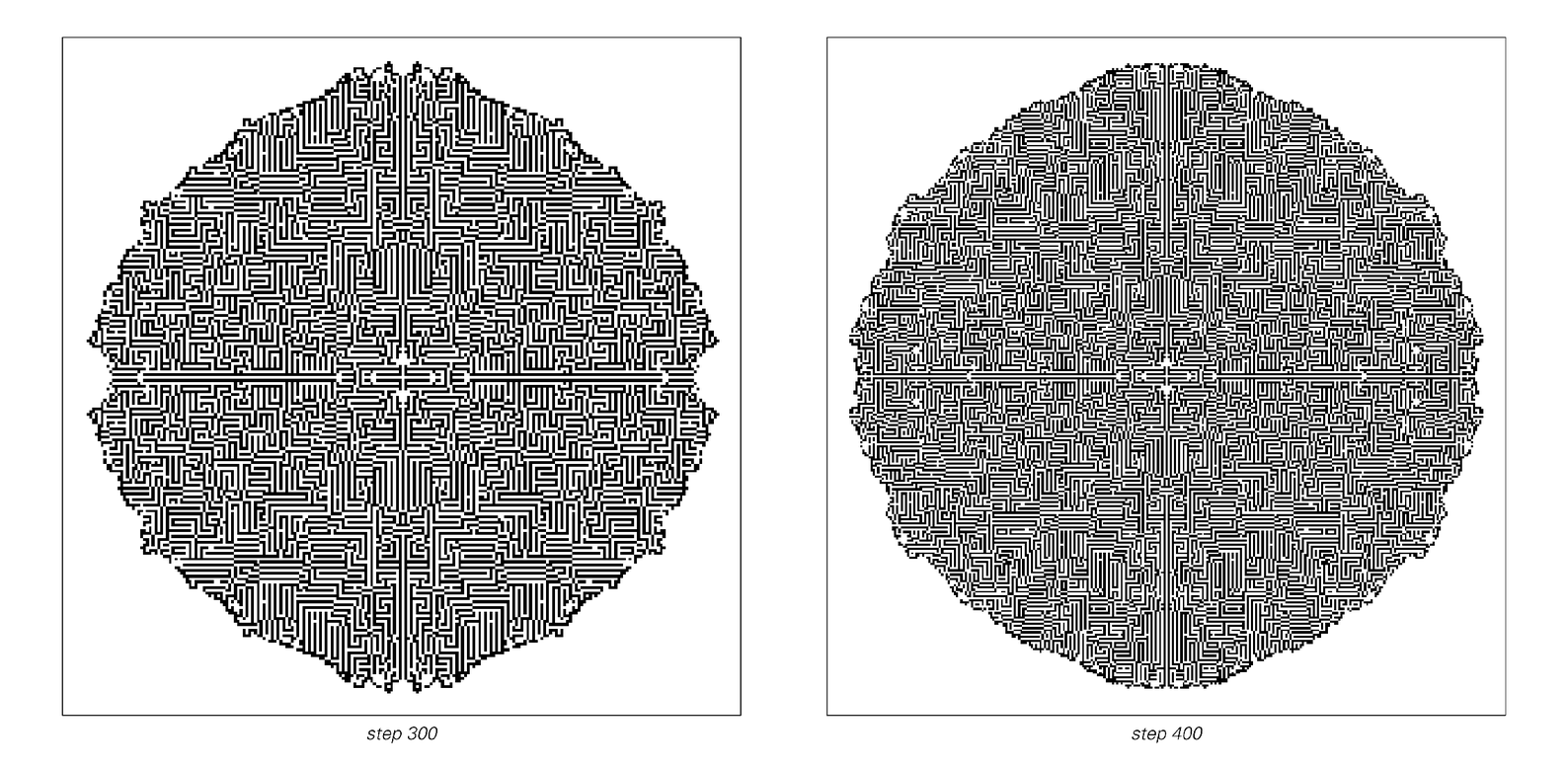


A two-dimensional cellular automaton first shown on page 178 with the rule that if out of the eight neighbors (including diagonals) around a given cell, there are exactly three black cells, then the cell itself becomes black on the next step. If the cell has 1, 2 or 4 black neighbors, then it stays the same color as before, and if it has 5 or more black neighbors, then it becomes white on the next step. (Outer totalistic code 746.) This simple rule produces randomness through the mechanism of intrinsic randomness generation, and this randomness in turn leads to a pattern of growth that takes on an increasingly smooth more-or-less circular form.



